The transport aircraft was being used as part of a training exercise which saw crews practising beach and rough strip landings, an RAF spokesman confirmed.
The Atlas C.1 (A400M) entered operational service with the Royal Air Force in 2014 and provides airlift capabilities, it has recently been used extensively to help evacuate Kabul.
A Royal Air Force A400M practicing night circuits on the beach at Pembrey Sands last night. pic.twitter.com/IYvYGW9xDJ
— George Allison (@geoallison) August 18, 2021
The Royal Air Force say that beaches are routinely used by the RAF for training operations with other tactical airlifters.
“The versatility of the A400M Atlas means it has the capability to land on a wide variety of surfaces including natural surfaces carrying a very large payload. This tactical capability was demonstrated during trials on Pembrey Sands beach.”
Describing the aircraft on their website, the RAF say:
“Atlas (Atlas C.1 A400M) has the ability to carry a 37-tonne payload over 2,000nm to established and remote civilian and military airfields, and short unprepared or semi-prepared strips. Capable of operating at altitudes up to 40,000ft, Atlas also offers impressive low-level capability. It will accommodate as many as 116 fully-equipped troops; vehicles; helicopters, including a Chinook; mixed loads, including nine aircraft pallets and 54 passengers, or combinations of vehicles, pallets and personnel, up to a payload of 37 tonnes.
Loads are delivered by parachute, gravity extraction from the aircraft’s rear ramp (influenced by the cargo’s own weight), or by landing. Paratroops will be dropped from the aircraft’s dedicated paratroop doors, or from the rear ramp.”




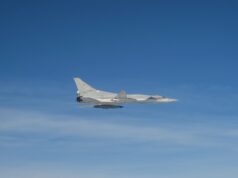
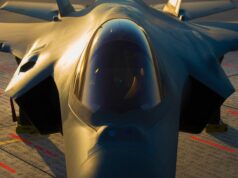
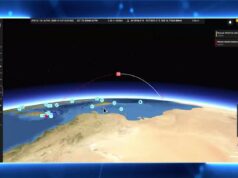
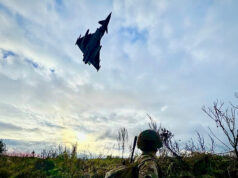
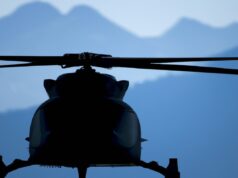
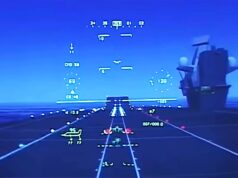
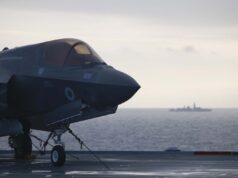

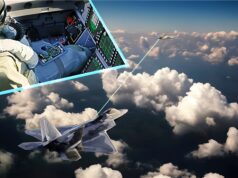

The current situation in Afghanistan shows the need to unlock all the latent capabilities of the A400 without the continuous dithering by Airbus.
God forbid, we might find ourselves having to create a temporary airfield in Afghanistan (it could be denied to us at the drop of a hat), or elsewhere in the world, for a similar evacuation or force deployment in a combat zone with no suitable airfield.
We best make sure our main airlifter is capable of the full remit of strategic and tactical operations and buy 8/9 more to replace the outgoing 14 C130J’s.
Maybe one good thing that comes out of the whole current debacle is the realisation that we need enough transport aircraft and as you say John, maybe another order to replace the outgoing Herks.
We can only hope Andy….
Yeah the old fat Herberts.🇬🇧🏴🇬🇧🏴🇬🇧🏴
Do you mean, Fat Alberts?
Agreed. Can we aerial refuel (receive fuel) with our A400s or do we not have that operational capability? (Can’t find any evidence of the RAF previously doing it).
The pictures show AAR probe so they can refuel from the Voyagers, but the fact that the Voyagers cannot be refueled in the air limits how far they could take / return an A400
Place Voyagers in Cyprus could be one possibility if required for long haul
Tommo, Akt is over 3K miles to Kabul so a round trip for it would only allow few tons of fuel to offload to an A400 certainly not enough for the A400 to do the round trip and carry payload and meet max weights for rough strip Ops. As the Voyagers can’t be in flight refueld you can’t even do the sort of thing that was done on the old Black Buck raids 🙂
The A400M can refuel from Voyager and has demonstrated the capability. However, for budgetary reasons the RAF dropped the requirement while I was still part of the programme, so the flight tests needed to obtain the formal RTS were never carried out. Whether this decision has now bee reversed I don’t know.
RAF wont buy more UNTILL it does what it said on the sales brochure,
Agree John. However it’s not Airbus holding back. Airbus has now completed all test to demonstrate all outstanding functional capabilities. It’s foot dragging by a combination of RAF, MAA, QinetiQ, MOD to give the aircraft all the Releases to Service (RTS) required before it can regularly perform all the capabilities it is capable of. Last time I had anything to do with the programme however, I was assured by the folks at Abbey Wood that if an operational necessity arose, emergency (temporary) RTS would be quickly forthcoming.
I love the rough/unprepared strip ability, ‘but’ from what i have read A400 weighs about 77Tons all the blurb re the short feild capability says at 100Tons at sea level (for roughly 1000M) so working on the fact that these are no support strips and the aircraft needs to carry round trip fuel soi know Max TOW is 140T and MLW is 123T) but it is the 100T that is limiting factor for short field? how much actuall/range payload would they get from aircraft landing with only 23 ton available for payload and to get home (back to FOB) again? Not sure what the Fuel Burn /range is
Well for comparison the Russian light transport aircraft in development which is similarly designed for rough strips just crashed, it has a payload capacity of only five tonnes.
Thats what i’m afraid of (not the crashing bit) but how much army kit aprt from infanry could you get thats under 5 Tons hell even 10Tons 2 old Snatch LR and dozen troops?
Kabul is 1300 Miles fm Dubai so could A400 fly 1300miles arrive at strip with enough fuel to return? how much could it lift out while staying under the magic 100 Tons for a rough strip
Particularly relevant here, as the main cargo would be helicopters initially. We need to be able to bring vehicles, Chinooks, Apache, medium lift helos etc, straight into a semi prepared airstrip in the arse end the boondocks in nowherersville, along with fuel bladders, mobile ATC systems, accomodation, stores, defences, possibly Land Ceptor etc, etc.
If we are really serious about out of area operations moving forward, then this capability needs to be available and fully operational.
According to 4:00 from this 2016 clipe here
https://www.youtube.com/watch?v=wr9PNiQLfbY
tests went better than expected and initial certified capacity for soft runways was 115 tons, to be increased step by step from there.
Hi good to know… hardly unprepared lol, the amount of work done by Royal engineers 🙂 but i get they were creating the senario. Not sure that we can fly for 6 hours and land 30 tons you notice doesn’t say that they can fly 6 hours back again if not then that means having fuel available? to have 100’s of tons of fuel available on a dirt runaway to support multiple flights (surely defeats the point?).
No. It’s a total of six hours, including return trip. That will have improved as the envelope is expanded. The field received a lot of preparation, but that was to make it consistently softer, not harder!
So 3 hours out so approx 1000miles? so they couldn’t do round trip from current FOB (Al Minad) to kabul without being refueled think it is 2600mile round trip especially if they have to land on rough strip? just trying to understand how restricted we are to having friendly bades to operate from even with Voyager support couldn’t make it from Akt.
More like 1500 miles. And refuelling by Voyager has been demonstrated but RAF doesn’t do it cause they haven’t invested as yet into trials to get RTS through normal QinetiQ/MAA route. Also think RAF has only invested in 7 theatre entry standard kits, including LAIRCM and cockpit armour. Whole fleet fitted for. I’ve been away from the programme for almost five years now, so don’t have the latest up to date picture. Cheers Steve
Afghanistan prep for plan B evacuation no doubt.
I think it’s just co incidental timing. The RAF transport force has been carrying out landings on Pembrey Sands for decades.
Thanks. 👍
Completely agree that what’s currently going on in Afghanistan shows that scrapping Hercules without replacement could be a major mistake.
If they can’t be retained then some more A400m are a must. Not sure if Spain and Germany are still looking to offload some of theirs second hand?
Airbus also need to get their finger out and clear it for as many roles as possible. On top of that availability seems to be in the toilet at the moment which after being in service nearly a decade seriously needs to improve!
I see my second contribution has disappeared, getting truly tedious…..
IT shows this is not the time to cut but to hold on to Hercules and Troop numbers 💂.The world is starting to look more Dangerous now more then ever.😕
Keep 6-8 of the newest SHs and put them on a French airfield together with the joint GER-FRA squadron for SpecOps missions. Maybe sell a couple as spares to the French. Bring in experienced ground crews to help train the others, in exchange for no fees for using the airbase. Win win for all concerned.
Germany has decided late 2020 to use 10-12 of the incoming “excess” A400s and put them into a joint Nato/European transport squadron to be based near Augsburg (Lechfeld) . Hungary has signed on. Austria might follow.
There should be 3 extra A400Ms from the German order left that are currently scheduled for mothballs (to potentially replace planes that are lost in action) but might be bought by the UK if they really want them.
Interesting idea! Frankly I think we should both keep at least 8 Hercules into the 2030’s and also try and snap up any mothballed A400m that Germany and Spain have going. Should surely be a bit cheaper than ordering new builds.
30 C17 and A400m are planned to replace the 50 Hercules we had 15-20 years ago. Even with their significantly larger size it’s not enough in an increasingly dangerous world and a supposed commitment to more nimble, expeditionary force structures.
It rather depends on how one looks at the comparison regarding your last point. 8 C-17 is roughly equal to 32 C-130J on payload, 22 A400M is roughly equal to 44 C130-J on payload. So the RAF fleet has an equivalent payload of 76 C-130J.
On top of that the C-17/A400M fleet has significantly faster cruise speed and approaching 2x max speed vs C-130J while maintaining similar or greater ranges at max payloads. Granted a potential negative is the lower number of aircraft in the C-17/A400M fleet but we get a significant uplift in capability for that. If we actually need more aircraft in future then we can efficiently incrementally add to the A400M fleet as required.
Not a good idea keeping low numbers of C-130J as it’s inefficient, which means it costs more.
Spot on GHF, absolutely right, although having such a soft spot for the herk it would be great if a few could be kept for those “just in case” moments! Alas it won’t happen but keeping a few for the more dirty, expendable adventures would be sound! 👍
It seems the problem air forces run into is the additional costs of maintaining two fleets, in the UK’s case it would be three airlift fleets. Training and maintaining quals for air and ground crew constrains personnel flexibility, two/three sets of spares, having to plan around different capabilities, etc just complicates things as well.
I suspect the French and Germans might have liked to avoid the C-130J purchase for their shared forces, had the A400m capabilities been there and ready at the time.
Its encouraging to see A400M progress to support the more esoteric capabilities in low and high altitude flight.
It’s difficult to define where the ideal number of assets sits. Logically though some c130j retention makes sound sense. Not just for scale , but also versatility of roles- maybe a dozen or so?
Its perhaps worth considering what versatility the C-130J still offers over the A400M and how long that advantage lasts, assuming its still present today?
C-130J is an established and trusted platform, so its easy to argue for its retention, but is it still actually better in some roles? What about low level roles? Does the C-130J have a lower IR signature, is it as survivable as A400M?
I don’t know the answer to those questions but consider the following capability claim by Airbus –
“The A400M also achieved a new decisive milestone after the certification flights of its Automatic Low Level Flight capability for Instrumental Meteorological Conditions (IMC). Using navigation systems and terrain databases, without the need of a terrain-following radar, this is a first for a military transport aircraft. This makes the aircraft less detectable in hostile areas and less susceptible to threats while conducting operations in hostile environments.”
How does the C-130J compare to this capability?
A400M is probably better than Herc in every respect, except inevitably, it does have a bigger IR and radar signature.
Point taken! It’s not just about size and payload though is it. Like every other asset numbers matter. 1 aircraft can’t be in 2 places at once.
I’m still against it, despite GHF well explained observations. Payload aside, numbers count.
I’d have the C130s remain supporting SF.
Perhaps well explained (thank you) but clearly not persuasive 😉 I will try to do better in future. Seem to recall being exhorted to do so from school days.
I accept that but we do need to do a due diligence on what numbers are necessary, otherwise where do we stop?
While an aircraft can’t be in two places at once it does beg the question as to whether it needs to be, or would we just be sending multiples of aircraft to the same destination due to lower payloads?
Perhaps what might also be interesting to consider in relation to UK A400M numbers would be what our air tanker fleet will look like after the PFI expires in 2035. We might end up with a smaller large body fleet, with additional and more flexible capability coming from A400M and unmanned platforms.
There were 2 reasons for GER and FRA to go for a small fleet of SHs in addition to their A400Ms (and Antonovs -SALIS).
1) Insurance against Airbus not delivering the A400M on schedule and at the agreed price. Helped their negotiation stance a lot. “You dont want to deliver? Then we’ll increase the Herc fleet instead.” Back when the decision was taken, A400M had still lots of issues, most of which have been dealt with by now, so that’s not much of an argument for the UK.
2) A more versatile fleet mix
The A400M CAN do basically all the SH can do. BUT that doesnt mean it is the best suited aircraft for all jobs:
It is way more expensive per aircraft, and availability is still lower than that of the SH.That means the airforce will be a lot more reluctant risking it except in emergencies.
Mixing in the A400M with helis like this
https://www.youtube.com/watch?v=mkfxRnHgpR4
simply isnt an option unless the Russians are at the gates of Warsaw.
And for dropping a platoon size special ops force into eg Somalia (or for training jumps) , a “cheap” Herc usually makes more sense (and an unmanned option isnt an option for this job). Also because you can have their pilots concentrate on training these kind of missions and have all the specialized equipment in one place.
While the A400M can land on small, unimproved airfields, a smaller aircraft simply is more nimble in that respect.
Similarly, refueling helis is easier, simply because there is less of a wake behind the smaller Herc.
***
Final thoughts: Saving money can be a fool’s game. A reasonable fleet mix has small, medium and big aircraft. The UK has C17 and A400M for the big and medium role. Getting rid of the small ones would be a serious mistake, imO.
The extra cost of the Hercs can be seriously reduced if you put them into a joint squadron as I proposed above. 18 Hercs on one airfield is a good sized operation. You can share costs between partners and help guarantee interoperability between your special forces.
Main issue is RAF doesn’t want to keep the Hercs, it no longer fits there Model.
Army SF wont pay to keep them for there needs.
So RAF will retire and currently, 2HD Hercs are in large demand and offer better value to sell now, than run into the ground.
Strange, here I thought it was the taxpayer who was paying for these things, and these decisions should thus be made by the Minister of Defense / parliament for the good of the country, not the needs of a service …
(not blaming you for saying how it is, just observing)
You make some interesting points, your idea of placing a core of the RAF C130j’s in the Franco German squadron is valid one …
Two points however, our J models are ‘well used’, they would require extensive and expensive rework to bring up to the same current production standard as the Franco German machines..
Secondly, their primary use being Special operations support, means we would be using machines at short notice and doing ‘things’ (like picking people up from a public highway in ‘bleep’, you would be amazed at some of the things 47 squadron have done over the years) that would make the German contingent faint at the very thought!!!
It’s just a no goer, as an idea.
More A400’s are the answer, if we are serious about putting Afghanistan in the rear view mirror and truly finding our stride as a globally deployable force structure, then flexible heavy lift, in sufficient numbers, sit firmly at the core of that ethos.
“and doing ‘things’ (like picking people up from a public highway in ‘bleep’, you would be amazed at some of the things 47 squadron have done over the years) that would make the German contingent faint at the very thought!!!”
1) That very much depends on the purpose of the flying. The KSK has done some wooly stuff in that respect, too. But if it’s “go and kill some terrorists in the bush”, then no, German forces at this point in time will rarely participate.
2) But that doesnt really matter for the purposes of said joint squadron. France doesnt want to be bound by these restrictions either. So the French can fly their own misssions. If the mission permits German participation (say, freeing European nationals from an African militia that is in the kidnapping business) – great, you can use mixed crews where useful for the schedule or mission.
If not, the flight crew will be all French.
Same would be true for any British participants.
From what I remember reading, the advantage of the model is that
One more advantage: The only people using A400Ms for such things are Europeans (and yes, you should have A400s qualified for that role, too, in case you want to go fast and far, or need to bring numbers).
And a A400M is big and thus hard not to notice.
But if you use Hercs, you can always blame the Muricans or someone else… Plausible deniability is a great thing to have …. 😉
Whether these advantages are worth the money is of course a difficult question in times of Warrior getting cut etc …
Fair points Positroll. My take on some of them.
Hercs can do small deployments per your Somalia example, but as you say later being cheap and saving money can be a fool’s game. An A400M can do those small deployments too but it can also deploy at much faster speed and to far greater range with those light loads, so there’s much more flexibility in this single platform for delivering small teams.
A Herc may be more suited to landing on small unimproved airfields or for refueling helis (the latter being something we don’t seem to be interested in currently). However, if an A400M can do these things well enough, but also do other things just not possible for a Herc then we have more flexibility and capability focusing on an A400M-only fleet.
The issue with consolidating Hercs centrally in Europe becomes a question of whether they are in the right place for the things we want to do with them. Also does that mean we need to permanently deploy relevant forces to that location too, even if that’s not the optimum location for them? That also has financial and perhaps operational costs. Its also a political question wrt to whether we want to dedicate those forces to being tied to joint missions with the French and German for that force.
I would have to agree. On the face it, it makes sense.
But, co-basing assets in a foreign country that are mainly used for special tasking, is a security risk in itself for units like 47 squadron, who frequently head off on UK specific (non NATO) classified missions.
Unfortunately, we all know the Germans view on out of area operations and they would be extremely uncomfortable with the prospect of being associated with any such activities, especially as part of of a unit that they are a constituent component of.
Copy paste from above:
France doesnt want to be bound by these restrictions either. So the French can fly their own misssions.
If the mission permits German participation (say, freeing European nationals from an African militia that is in the kidnapping business) – great, you can use mixed crews where useful for the schedule or mission.
If not, the flight crew will be all French. Same would be true for any British participants.
From what I remember reading, the advantage of the model is that
One more advantage: The only people using A400Ms for such things are Europeans (and yes, you should have A400s qualified for that role, too, in case you want to go fast and far, or need to bring numbers).
And a A400M is big and thus hard not to notice.
But if you use Hercs, you can always blame the Muricans or someone else… Plausible deniability is a great thing to have …. 😉
Whether these advantages are worth the money is of course a difficult question in times of Warrior getting cut etc …
Trouble is Positroll, in your hypothetical African kidnapping situation, the Germans would need to carefully plan a meeting to vote on the sandwiches for the main meeting, to agonise about the kidnapping 🤣🤣
Right this moment, the Luftwaffe is moving 2 KSK H145M to Kabul for “high value” rescue operations – the US asked them to and likely will fly top cover with Apaches.
Seems like that decision was taken within a day.
https://www.thedrive.com/the-war-zone/42083/germany-sending-special-ops-helicopters-to-kabul-to-rescue-evacuees-outside-the-airport
Blimey, the ‘Germans deploy a couple of light helicopters’, when can we expect at least a battalion plus SF, I fear it might be a very, very long wait Positroll…
Yet again, us and our American colleges do the heavy lifting….
The ‘Maroon Machine’ has had a very busy day too….
Um … there already IS a short batallion of German Fallschirmjäger at the Kabul airport (300 men?) … has been for 5-6 days Plus some military police, medics … 5 A400M and a MRTT were in use yesterday, with another A400M on its way.
Last number (20th) was >1600 civilians flown out.
But dont let these facts stand in the way of your conclusions …
As for the US doing the heavy lifting – they havent got any boots on the ground outside Kabul airport at this time.
While the French have been running busses with escorts right into the city center …
The problem is, in your imagined African kidnapping scenario, the Germans would have to meticulously organize a conference to vote on the sandwiches for the main meeting, to agonize about the kidnapping.
https://reviewscrush.com/
Can’t disagree with this. France bought some Hercs cause they had to refuel their CSAR helos and Airbus at the time was refusing to certify this capability on A400M. It worked. Airbus got its finger out, spent a few more millions and now it can be done.
It’s not airbus any more. It’s the RAF
Thanks for the clarification of Pembrey Sands,
For a moment I thought “Cockle Strand”?
Just hold “that” thought:
Isle of Barra “Airfield” ~ the beach at the northern end of Barra ~ requires pilots to have knowledge of the Tide Patterns and other local knowledge, such as Terrain and Topography
Just read an article on thinkdefence on strategic airlift. Definitely an opportunity with a gap in production to develop a strategic airlifter for Western forces. The article discusses the possibility of partnership with Ukraine for what would be a next gen AN124, an airframe which also dominates commercial airlift. We certainly have the expertise to develop a product with a partner to fill a gap. Do we have the ambition. Well its not a ship so we’ll probably buy foreign